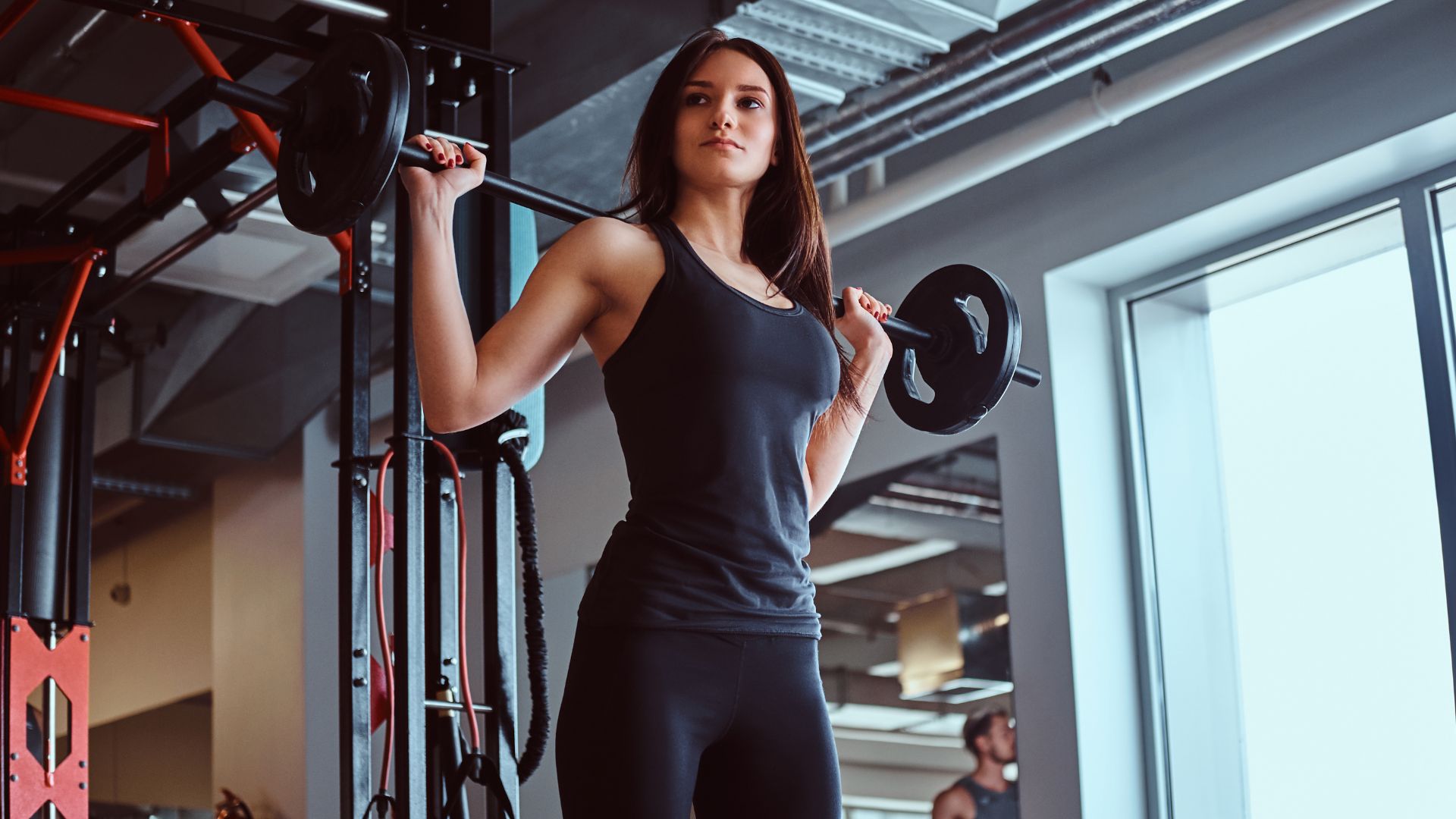Are you wondering how much weight you should be able to squat if you weigh 225 pounds? Squatting is a great way to build lower body strength and improve overall fitness.
However, determining the right amount of weight to squat can be a bit challenging, especially for beginners.
In this article, we will discuss how much you should be able to squat based on your body weight, factors that can affect your squatting ability, and tips to improve your squatting technique.
The amount you should be able to squat depends on various factors such as your fitness level, training experience, and technique. However, as a general guideline, a person weighing 225 pounds should aim to squat at least their body weight, which means being able to lift 225 pounds in a squatting motion.
However, if you are new to squatting or have not trained in a while, it is recommended to start with a weight that you can handle with good form and gradually increase the weight as you get stronger and more comfortable with the exercise. It is also important to have proper form and technique while squatting to avoid injury and maximize the benefits of the exercise.
It depends on your fitness level, training experience, and technique.
The amount of weight you can squat is influenced by several factors, including your fitness level, training experience, and technique.
Fitness level refers to your overall physical fitness and strength. The stronger you are, the more weight you will be able to lift.
If you have been consistently working out and have built up your strength, you will be able to lift heavier weights than someone who is new to exercise.
Training experience also plays a role in your ability to squat. If you have been squatting for a while and have developed good technique, you will likely be able to lift more weight than someone who is new to squatting.
Technique is perhaps the most important factor in determining how much weight you can squat. Squatting with proper form and technique is essential for maximizing your strength and avoiding injury.
If you have poor technique, you may not be able to lift as much weight as you could with better form.
The amount of weight you can squat is determined by a combination of these factors, and it can vary from person to person. It’s important to start with a weight that is appropriate for your fitness level and technique and gradually increase the weight as you become stronger and more experienced.

Aim for at least your body weight.
As a general rule of thumb, if you weigh 225 pounds, you should aim to squat at least your body weight. This means being able to lift 225 pounds in a squatting motion.
However, it’s important to note that this is just a guideline and not a strict requirement.
Your ability to squat your body weight will depend on your individual fitness level, training experience, and technique.
Some people may be able to lift more than their body weight, while others may need to work up to it gradually.
It’s important to start with a weight that is appropriate for your level and gradually increase it over time as you get stronger and more experienced.
Here’s a table that provides general recommendations for the amount of weight you should aim to squat based on your body weight:
| Body Weight (lbs) | Recommended Squat Weight (lbs) |
|---|---|
| 100-120 | 80-120 |
| 120-150 | 95-150 |
| 150-180 | 120-180 |
| 180-200 | 145-200 |
| 200-250 | 160-250 |
| 250-300 | 185-300 |
| 300+ | 225+ |
Again, these are general recommendations and your individual ability to squat may vary based on your fitness level, training experience, and technique. It’s important to start with a weight that is appropriate for your level and gradually increase it over time as you get stronger and more experienced. Always remember to prioritize proper form and technique over lifting heavy weights.
Start with a weight that you can handle.
If you are new to squatting or haven’t done it in a while, it’s important to start with a weight that you can handle with good form.
This means choosing a weight that allows you to perform the exercise correctly, without sacrificing your form or putting yourself at risk of injury.
Starting with a lighter weight will also allow you to focus on your technique and build a solid foundation of strength.
As you become more comfortable with the exercise and your form improves, you can gradually increase the weight.
It’s important to progress at a pace that is appropriate for your level of fitness and experience.
If you increase the weight too quickly, you may be at risk of injury or may not be able to perform the exercise correctly.
Remember that proper form and technique are essential for getting the most out of the squat and avoiding injury.
Take the time to learn the proper technique and start with a weight that allows you to perform the exercise correctly.
As you get stronger and more experienced, you can gradually increase the weight and challenge yourself.
here are some general tips to keep in mind as you work on improving your squat technique:
| Technique Tips for Squats |
|---|
| Keep your feet shoulder-width apart |
| Keep your toes pointed slightly outwards |
| Keep your chest up and your back straight |
| Engage your core muscles |
| Lower yourself down by bending at the hips and knees |
| Keep your knees aligned with your toes |
| Lower yourself until your thighs are parallel to the ground |
| Push through your heels to stand back up |
| Exhale as you stand up |
| Keep your head and neck in a neutral position |
Remember to start with a weight that you can handle with good form, and gradually increase the weight as your technique improves and you become stronger. Always prioritize proper form over lifting heavy weights, and if you’re unsure about your technique, consider working with a qualified trainer or coach.
Proper form and technique are important.
Having proper form and technique while squatting is crucial for avoiding injury and getting the most out of the exercise.
When you perform squats with good form, you engage the muscles in your legs and core effectively, which can help you build strength, increase muscle mass, and improve your overall fitness.
On the other hand, performing squats with poor form can put unnecessary stress on your joints, leading to injury and pain. It can also result in ineffective muscle engagement, which means you won’t get the full benefits of the exercise.
To perform squats with proper form and technique, you should:
- Stand with your feet shoulder-width apart and your toes pointing slightly outward.
- Keep your chest up and your back straight.
- Bend your knees and push your hips back as if you’re sitting in a chair.
- Lower your body until your thighs are parallel to the ground.
- Push through your heels and extend your legs to return to the starting position.
Make sure to keep your knees in line with your toes and avoid letting them cave in or extend past your toes. You should also avoid arching your back or rounding your shoulders.
If you’re new to squatting or unsure about your form, it’s a good idea to work with a trainer or watch tutorial videos to learn the proper technique.
here’s a table summarizing the proper form and technique for squats:
| Proper Form and Technique for Squats |
|---|
| 1. Stand with your feet shoulder-width apart and toes pointing slightly outward. |
| 2. Keep your chest up and back straight. |
| 3. Bend your knees and push your hips back as if you’re sitting in a chair. |
| 4. Lower your body until your thighs are parallel to the ground. |
| 5. Push through your heels and extend your legs to return to the starting position. |
| 6. Keep your knees in line with your toes and avoid letting them cave in or extend past your toes. |
| 7. Avoid arching your back or rounding your shoulders. |
| 8. Work with a trainer or watch tutorial videos if you’re new to squatting or unsure about your form. |
here’s a tabular summary:
| Topic | Summary |
|---|---|
| Weight | A person weighing 225 pounds |
| Squatting amount | Should aim to squat at least their body weight |
| Factors affecting squatting | Fitness level, training experience, and technique |
| Starting weight | It’s important to start with a weight that you can handle with good form |
| Gradual progression | Gradually increase weight as you get stronger and more experienced |
| Proper form | Proper form and technique are essential for avoiding injury and maximizing benefits |
| Form tips | Keep knees in line with toes, avoid arching back or rounding shoulders |
| Importance of foundation | Building a solid foundation of strength and technique is crucial |
| Overall goal | Safely and effectively improve squatting ability and overall fitness level |
Conclusion
In conclusion, the amount of weight a person weighing 225 pounds should be able to squat depends on various factors such as their fitness level, training experience, and technique.
As a general guideline, it is recommended to aim to squat at least your body weight.
However, it’s important to start with a weight that you can handle with good form, and gradually increase the weight as you get stronger and more experienced.
Proper form and technique are also crucial for avoiding injury and getting the most out of the exercise.
By following these guidelines and focusing on building a solid foundation of strength and technique, you can safely and effectively improve your squatting ability and overall fitness level.

Hey there, it’s Mike Rrsq, the Editor-in-Chief over at Jsquat.com, and I’m absolutely obsessed with all things squat fitness! I’ve been lucky enough to get some serious recognition for my work in this field. With a solid background in the fitness and wellness industry, I’ve been there right from the get-go, helping shape this website into what it is today.
You see, I’m not just the boss around here; I’m also a passionate contributor. I love sharing my insights through my articles, and trust me, they’re not your run-of-the-mill stuff. Each piece I write is a labor of love, filled with my expertise and real-world experience in the fitness universe. So, if you’re into fitness and looking for some inspiration, you’re in the right place!

